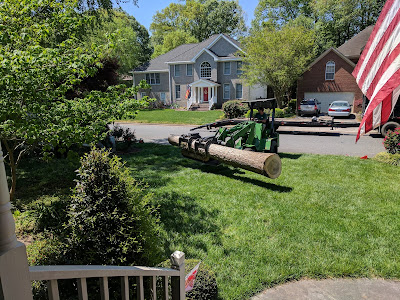Introduction
In the world of construction, accurate estimation is the foundation of a successful project. Whether you’re building a new home, renovating a space, or adding an extension, knowing the precise amount of materials required and the associated costs is crucial. A framing estimator is a vital tool that helps contractors, builders, and DIY enthusiasts plan their projects efficiently. By providing accurate estimates of the materials needed for framing, this tool can save time, reduce waste, and keep your project on budget. In this comprehensive guide, we’ll explore what a framing estimator is, how it works, and the benefits it offers to anyone involved in construction.
What is a Framing Estimator?
Understanding the Basics
A framing estimator is a digital tool or software application designed to calculate the quantity and cost of materials required for framing a structure. Framing involves the construction of the skeleton of a building, which includes walls, floors, ceilings, and roofs. The framing estimator helps you determine the exact amount of lumber, nails, and other materials needed based on the dimensions and specifications of your project.
The Importance of Accurate Estimation
Accurate estimation is critical in construction for several reasons:
- Budget Management:
- Knowing the cost of materials upfront allows you to manage your budget effectively, avoiding unexpected expenses.
- Resource Allocation
- : By estimating the materials needed, you can order the right amount, reducing waste and ensuring that you have everything required for the job.
- Project Planning:
- Accurate estimates help you plan the timeline of your project, ensuring that materials are available when needed and preventing delays.
How a Framing Estimator Differs from a Framing Calculator
While both tools serve the purpose of estimating materials, a framing estimator goes a step further by providing cost estimates. A framing calculator typically focuses on the quantity of materials, while a framing estimator includes pricing information, making it a more comprehensive tool for project planning.
How Does a Framing Estimator Work?
Inputting Project Details
The first step in using a framing estimator is to input the details of your project. This includes:
- Dimensions:
- The length, width, and height of the walls, floors, ceilings, and roof.
- Material Type:
- The type of lumber or metal studs you plan to use.
- Openings:
- The size and number of windows, doors, and other openings.
- Additional Features:
- Any special features such as vaulted ceilings or unique architectural elements.
Calculating Material Quantities
Once you’ve entered the project details, the framing estimator calculates the quantity of materials needed. This includes:
- Studs:
- The number of wall studs required based on the spacing (e.g., 16 inches on center).
- Joists:
- The number of floor and ceiling joists required.
- Headers and Beams:
- The size and quantity of headers and beams for load-bearing walls.
- Nails and Fasteners:
- The quantity of nails, screws, and other fasteners needed.
Estimating Costs
The framing estimator then provides a cost estimate based on the current prices of the materials you’ve selected. This can include:
- Lumber Costs:
- The cost of the wood or metal studs.
- Fastener Costs:
- The cost of nails, screws, and other fasteners.
- Labor Costs:
- If applicable, the estimator can also include labor costs based on local rates.
Adjusting for Waste and Contingencies
Most framing estimators include a waste allowance, typically around 10-15%, to account for cuts, mistakes, and material loss. You can also add a contingency for unexpected expenses, ensuring that your budget is realistic and comprehensive.
Benefits of Using a Framing Estimator
Precision and Accuracy
A framing estimator provides precise material and cost estimates, reducing the risk of over- or under-ordering. This accuracy ensures that your project stays on budget and on schedule.
Time Efficiency
Manually calculating material quantities and costs can be time-consuming and prone to errors. A framing estimator automates this process, delivering results in minutes.
Cost Savings
By accurately estimating the materials and costs, a framing estimator helps you avoid unnecessary expenses, reduces waste, and ensures that you only order what you need.
Simplified Project Management
With detailed material and cost estimates, you can better plan your project, from ordering supplies to scheduling labor. This leads to a smoother, more efficient construction process.
Key Features to Look for in a Framing Estimator
User-Friendly Interface
A good framing estimator should have an intuitive interface that makes it easy to input project details and understand the results. Look for tools with clear instructions, easy-to-navigate menus, and visual aids.
Customization Options
The best framing estimators allow you to customize your calculations based on your specific project needs. This includes adjusting material types, spacing, and adding special features like vaulted ceilings or unique architectural elements.
Cost Database Integration
Some framing estimators are integrated with cost databases that provide up-to-date pricing information for materials. This ensures that your cost estimates are accurate and reflect current market conditions.
Reporting and Exporting Capabilities
Look for framing estimators that allow you to generate detailed reports and export them in various formats (e.g., PDF, Excel). This makes it easy to share estimates with clients, suppliers, or other stakeholders.
How to Use a Framing Estimator: Step-by-Step Guide
Step 1: Measure Your Project
Start by measuring the length, width, and height of each wall, floor, ceiling, and roof section that requires framing. Be sure to include the dimensions of any openings, such as windows and doors.
Step 2: Input the Details
Enter the measurements into the framing estimator, along with the type of material you plan to use. Specify the spacing of studs, joists, and other framing components, and add any special features or conditions.
Step 3: Review the Estimates
The framing estimator will provide a detailed estimate of the quantity of materials needed, along with the total cost. Review these estimates carefully, and make any necessary adjustments.
Step 4: Consider Waste and Contingencies
Add a waste allowance and contingency to account for cuts, mistakes, and unexpected expenses. This ensures that your estimate is realistic and comprehensive.
Step 5: Generate Reports
Once you’re satisfied with the estimate, generate a report that outlines the materials, quantities, and costs. You can share this report with clients, suppliers, or other stakeholders as needed.
Frequently Asked Questions (FAQs)
What is the difference between a framing estimator and a general construction estimator?
A framing estimator is specifically designed for calculating the materials and costs associated with framing a building. A general construction estimator may include calculations for a broader range of construction tasks, such as concrete, roofing, and electrical work.
How accurate are framing estimators?
Framing estimators are highly accurate when used correctly. However, the accuracy depends on the quality of the input data. Be sure to measure carefully and account for all openings and special conditions to get the most accurate estimate.
Can a framing estimator be used for both residential and commercial projects?
Yes, framing estimators can be used for both residential and commercial projects. Some estimators offer additional features for commercial projects, such as load-bearing calculations and compliance with building codes.
Is it necessary to include a waste allowance when using a framing estimator?
Yes, it’s important to include a waste allowance, typically 10-15%, to account for cuts, mistakes, and odd shapes. Most framing estimators automatically include this in their estimates.
Where can I find a free framing estimator?
Many construction websites and apps offer free framing estimators that are easy to use and provide accurate estimates. These tools are ideal for both small-scale DIY projects and large commercial builds.
Conclusion
A framing estimator is an essential tool for anyone involved in construction, whether you’re a professional contractor or a DIY enthusiast. It simplifies the process of estimating materials and costs, ensuring accuracy and efficiency. By using a framing estimator, you can save time, reduce waste, and stay within your budget, making your project smoother and more successful.


